
BioBlitz! Oklahoma was hosted by the Oklahoma Biological Survey beginning in 2000 until 2022. During those two decades, thousands of community scientists reported thousands of species while celebrating Oklahoma's natural diversity.
Use this page to explore the locations and results of those inventories.

2017 – Black Mesa State Park and Nature Preserve
2016 – OU Biological Station at Lake Texoma
2014 – Black Kettle National Grasslands and Washita Battlefield National Historic Site, Cheyenne
2012 – Foss State Park and Washita National Wildlife Refuge
2011 – Chickasaw National Recreation Area
2010 – Kaw Lake and Camp McFadden
2009 – Robbers Cave State Park and Wildlife Management Area
2008 – Great Salt Plains State Park and Salt Plains National Wildlife Refuge
2007 – Wichita Mountains National Wildlife Refuge
2006 – Quartz Mountain Nature Park
2004 – Okmulgee and Dripping Springs State Park
2003 – Boiling Springs State Park
Inventory Totals
453 Expert Biologists & Citizen Scientists
907 Biological Species Observed
*over 100 species were not identified during the inventory, but have been included in the number of species
Disclaimer: BioBlitz! is not meant to be an accurate scientific inventory of the area. The number of organisms found during this 24 hour period is highly reflective of a combination of factors including: weather, experts participating, number of citizen scientists, and luck.
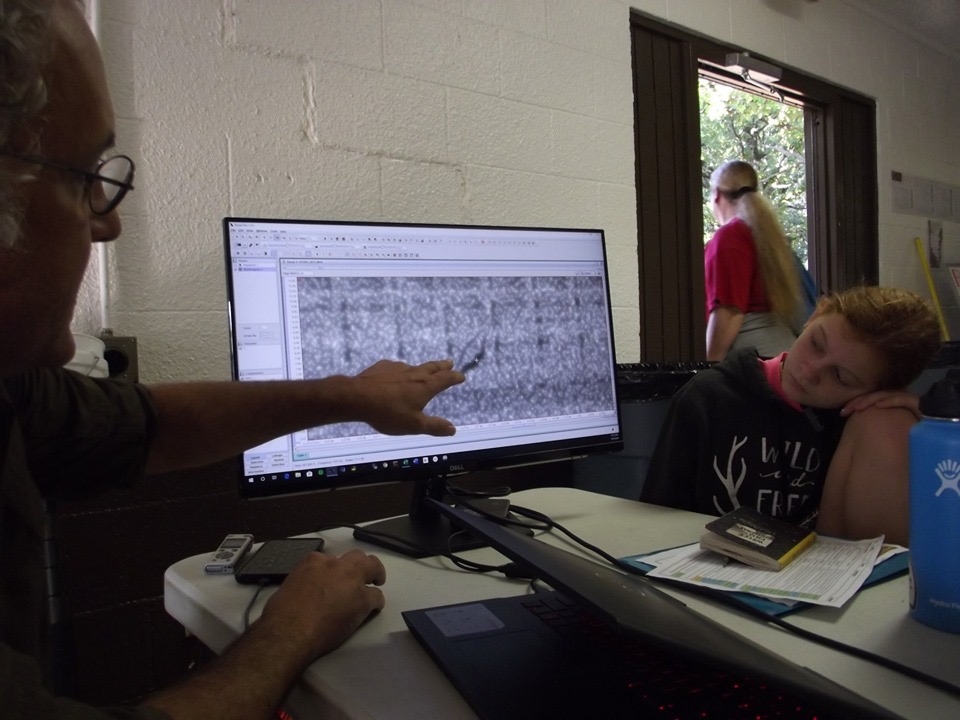
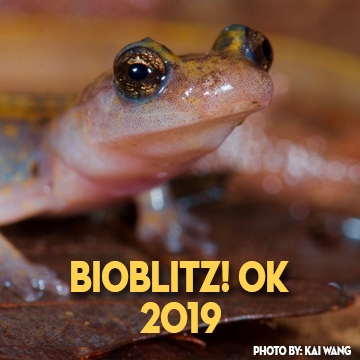
About
Named for the creator of the Cherokee Syllabary, Sequoyah State Park is on a peninsula surrounded by Fort Gibson Lake.
Links to learn more about the region:
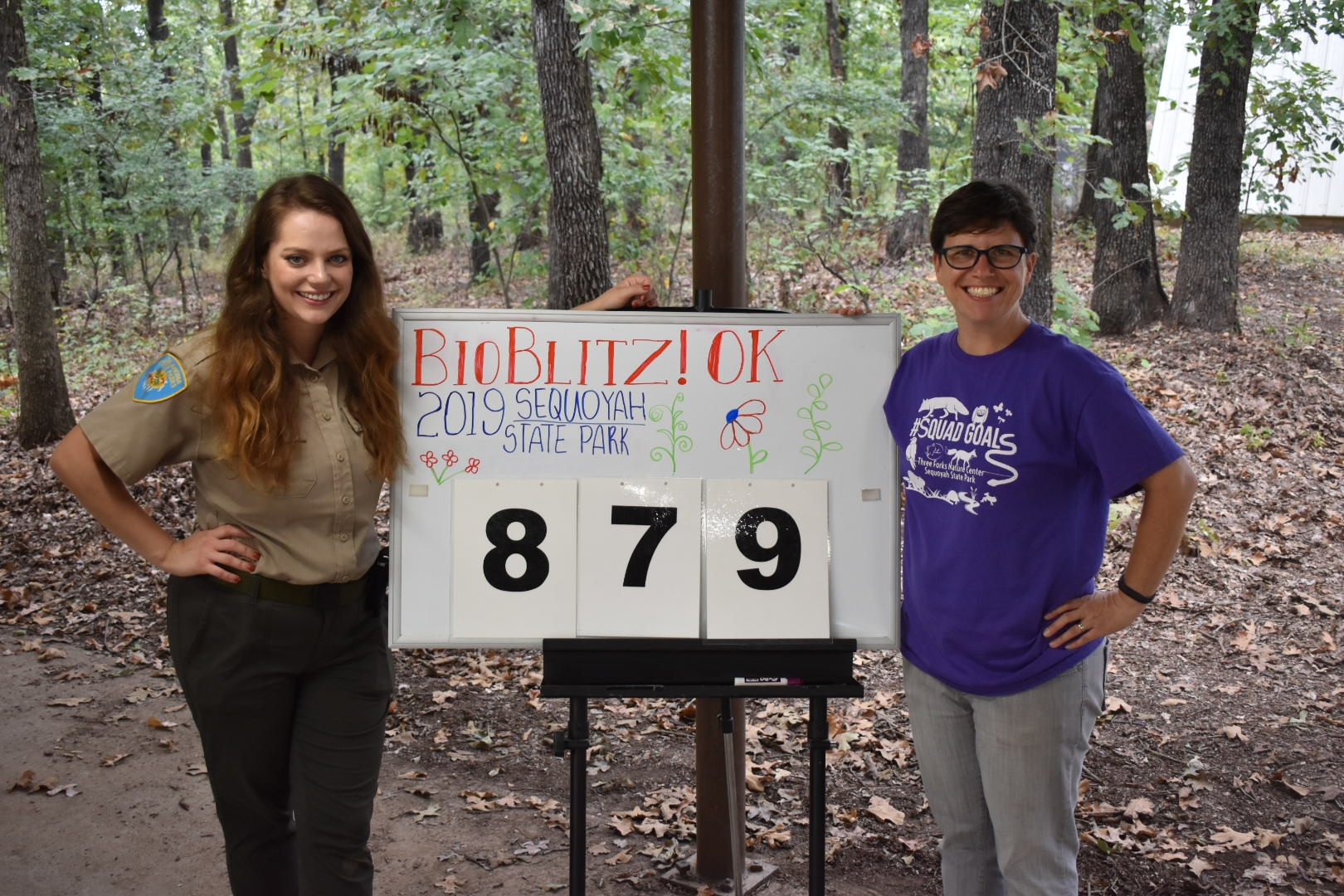
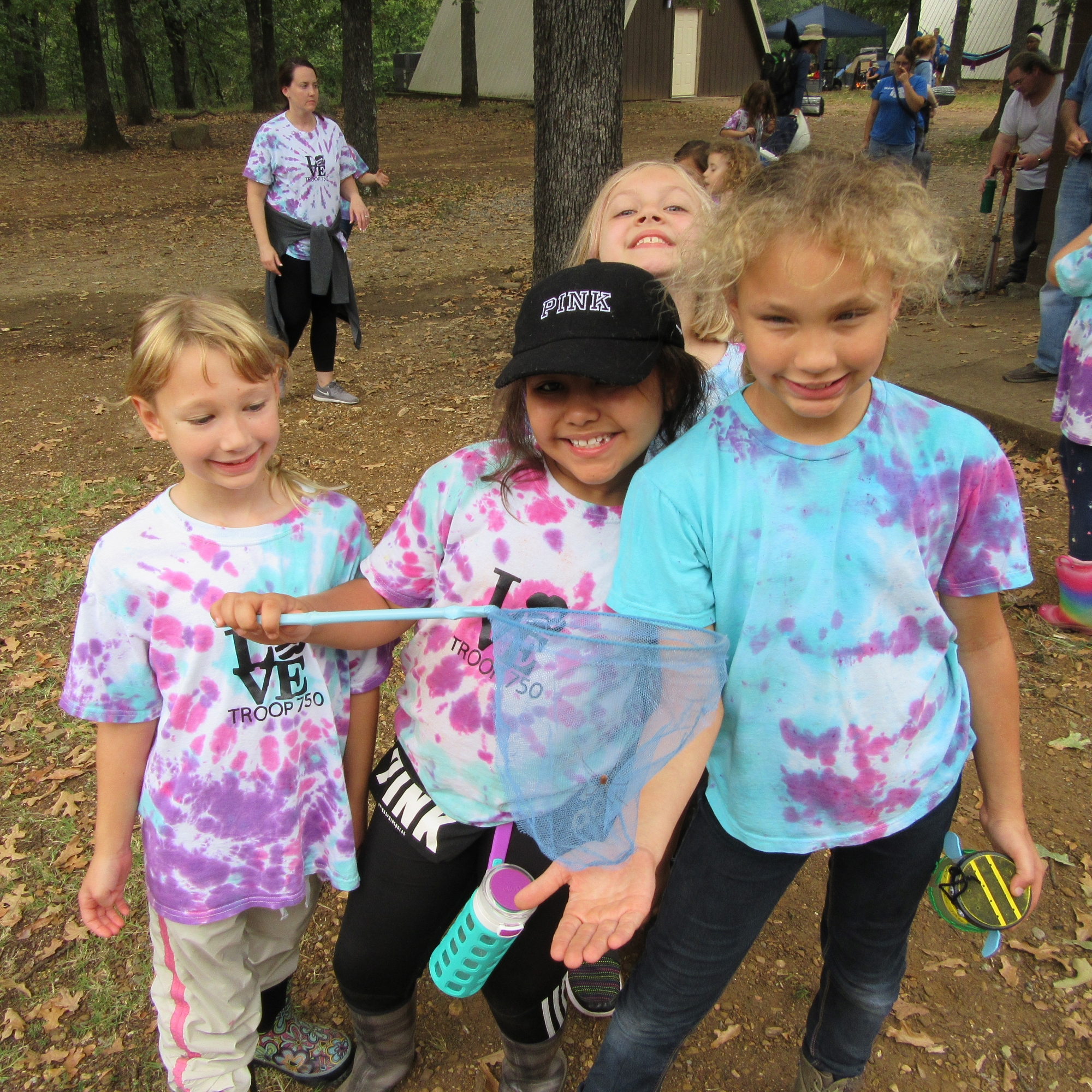

BioBlitz! In the Forest
BioBlitz! 2018 was in the eastern side of Oklahoma at Greenleaf State Park, near Braggs featuring the 930-acre Greenleaf Lake. This park originates from the New Deal era and from the work of the Works Progress Administartion (WPA). The stone cabins and facilities, constructed by the CCC, WPA, and German prisoners of war, date back to the 1930s-1940s. This part of the state is hilly, as it is situated on the edge of the Boston Mountains, and is covered by oak and hickory forest.

Inventory Totals
338 Expert Biologists & Citizen Scientists
765 Species Observed
Disclaimer: BioBlitz! is not meant to be an accurate scientific inventory of the area. The number of organisms found during this 24 hour period is highly reflective of a combination of factors including: weather, experts participating, number of citizen scientists, and luck.

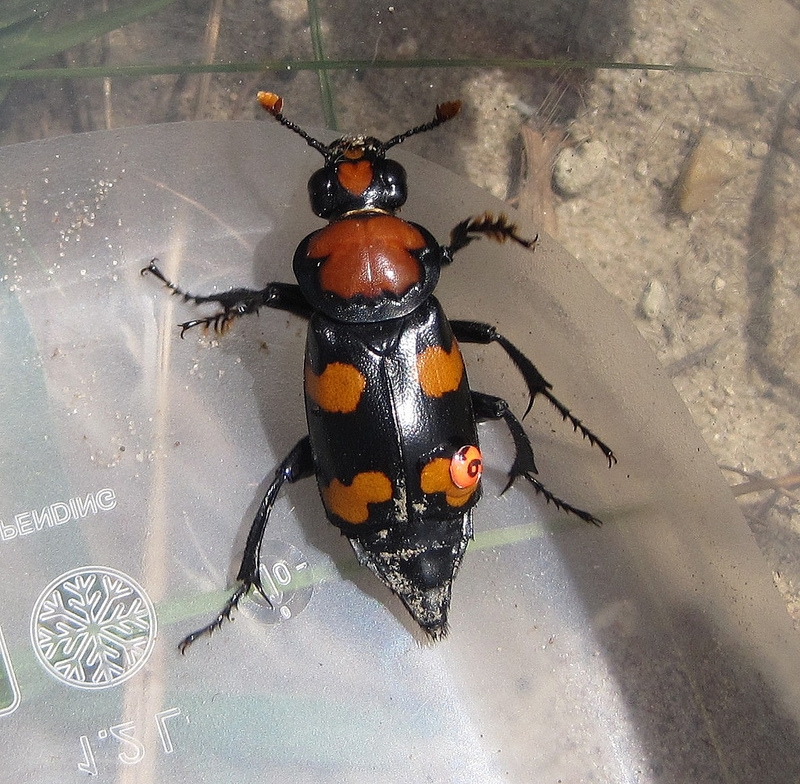
The American Burying Beetle was our highlighted taxa for 2018. This beetle measures 1 to 1.5 inches and is the largest member of the carrion beetle family (Silphidae)! It’s coloration is striking with red and black markings over its wing-covers and orange, fan-shaped antennae tips. This nocturnal beetle specializes in the consumption of dead animals, which it uses as a nursery for its young. Adult beetles emerge in May to search for carcasses and pair off. Once they’ve found a large enough carcass, they bury it in an underground chamber where they clean and chemically preserve it. The female lays eggs inside the carcass, while the male tends to the new young. These young emerge as adults sometime before October to feed
The American Burying Beetle was listed as federally endangered in 1989. The species has seen an increase in numbers due to the efforts of a wide variety of conservationists and advocacy groups, but still has a way to go before it fills its former range. Oklahoma is one of the hot-spots for American Burying Beetle conservation. We have records in at least 29 eastern counties, where the beetles prefer open, oak-hickory forests with native grass cover. The causes of its decline are unsure, but they’re thought to include habitat loss/fragmentation, pesticide use, and the reduction of carcass availability. Despite its gruesome parenting strategy, this beetle and other decomposers/detritovores serve a unique role in the recycling of ecosystem nutrients.
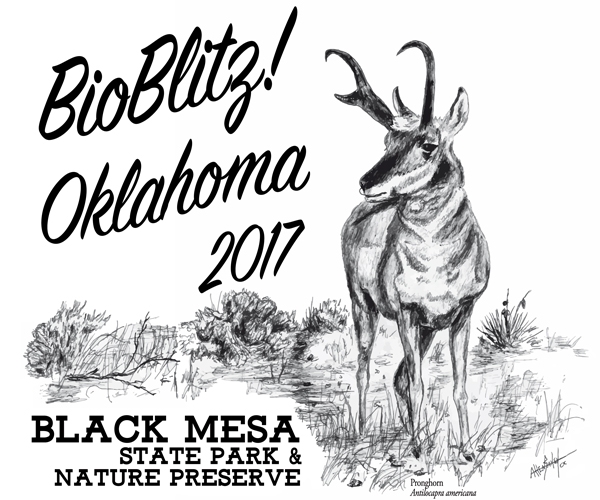
About
This BioBlitz! marked the farthest west, highest elevation, longest inventory time, and first dinosaur! Over 300 biologists and citizens scientists from Oklahoma, Texas, Kansas, and Colorado spent 42 hours looking for as many biological species as possible at the tip of the Oklahoma panhandle. Scouring the shortgrass prairie, sage brush, mesa tops, and steep shrub covered slopes, we found at least 720 species! This number has grown since our initial announcement of 709 at 4:00 p.m. at the end of the inventory. As people double check lists and gather additional observations, this number may grow!
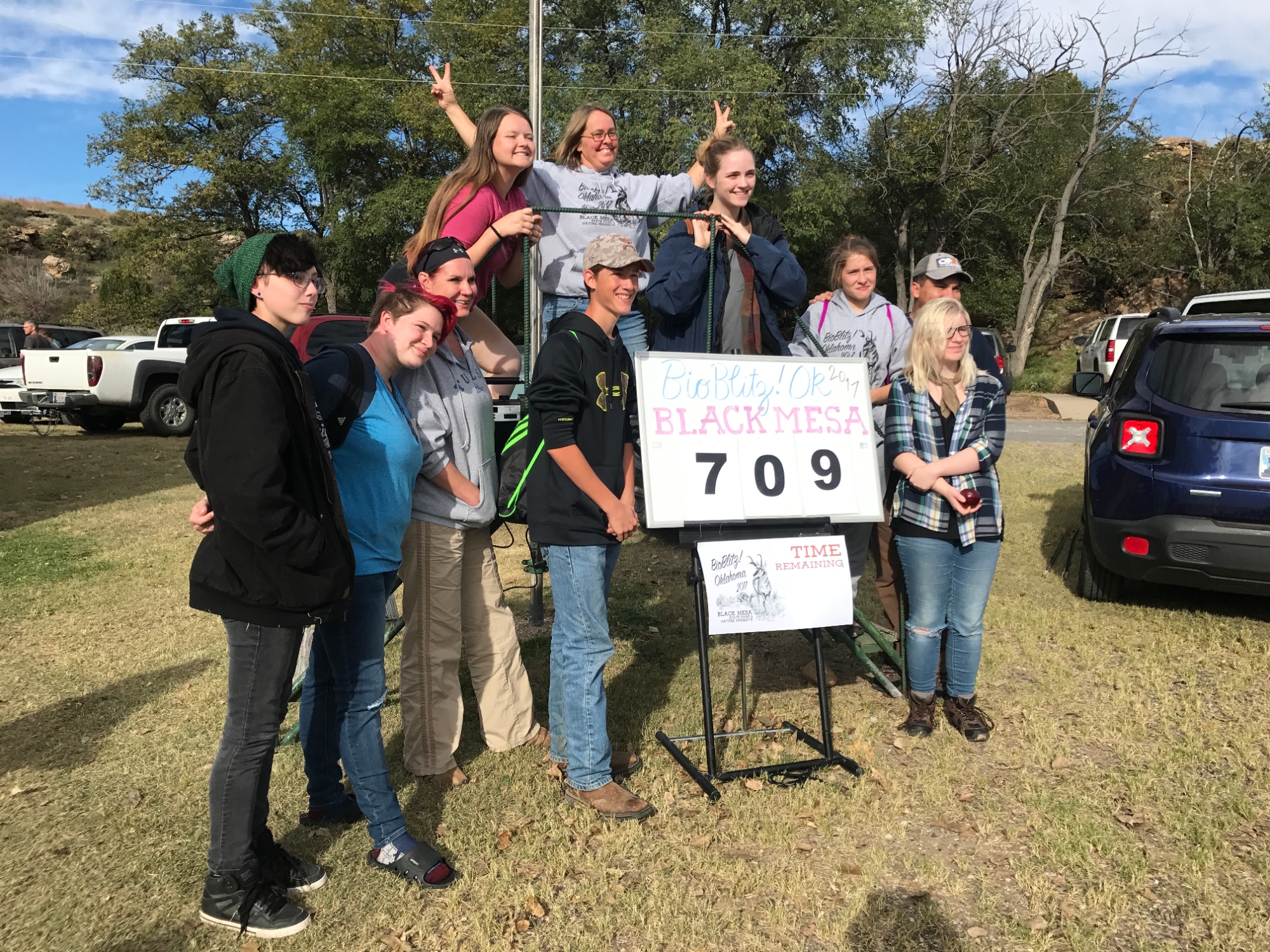
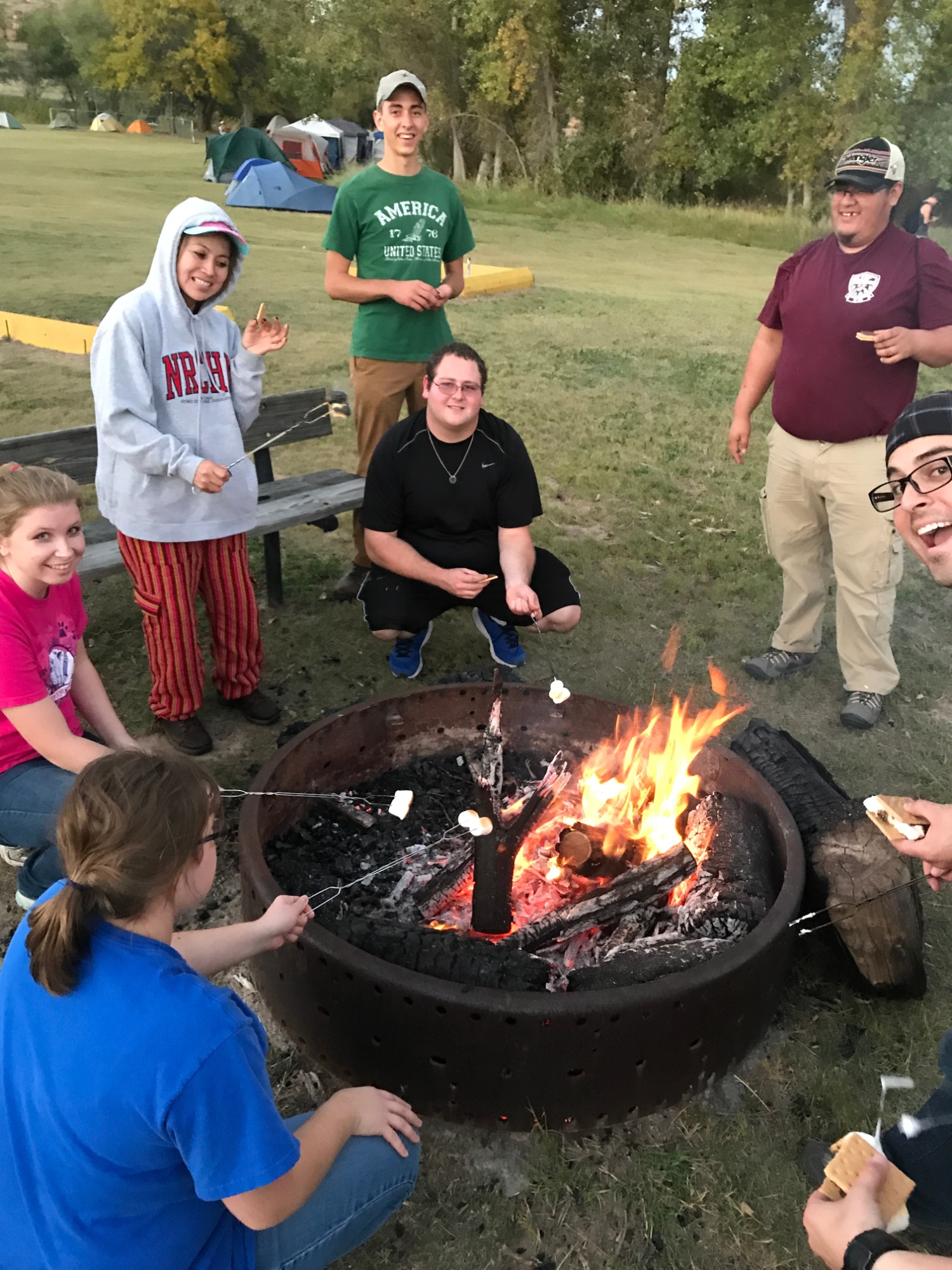

Inventory Totals
720 Biological Species Observed

About
The University of Oklahoma Biological Station is a remote campus of the University of Oklahoma, and a unit of the Department of Biology. Our mission is to provide excellence in education, research, and service for students and faculty of both the University and broader community. We provide educational opportunities to students through collegiate courses, research involvement, and outreach activities. We have a seven-decade history of research in biology and the environment that has contributed to a better understanding of our planet. Service activities at UOBS foster learning through activities for K-12 students and teachers, scientific conferences, student and faculty informal education, and more.

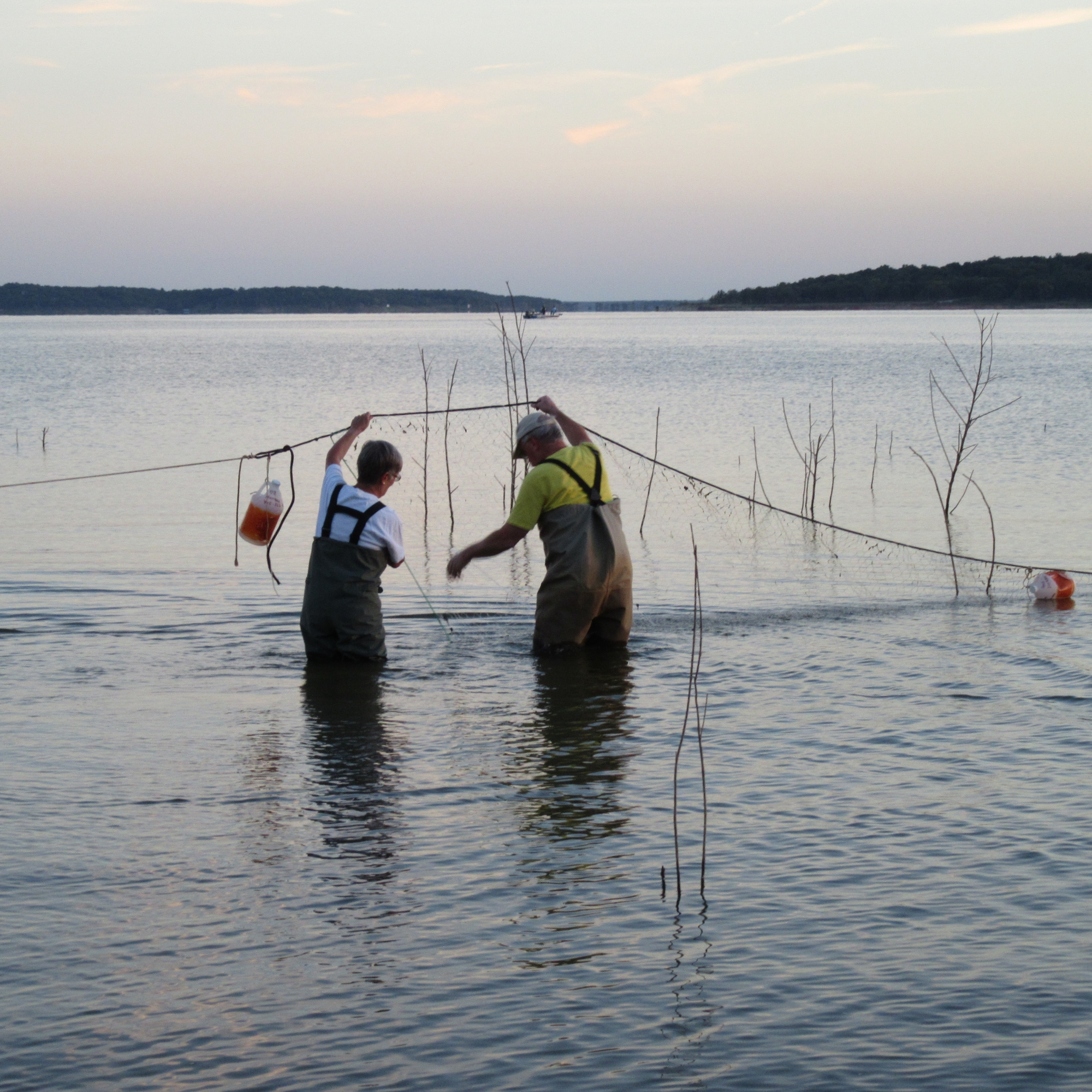
Inventory Totals
Total number of human attendees: 352
Minimum number of volunteer experts and administrative helpers: 39
Number of states represented: 3
Number of service dogs attending: 1
Estimated number of different schools, agencies, and organizations represented: 43
Number of mammal species found, including the house mouse that escaped during the fluorescent tracking activity: 12
Number of venomous snakes out of the 19 reptiles and amphibians: 2
Number of plant species inventoried, including 6 non-vascular plants: 163
Factor by which the number of fungi seen this year increased from last year: 2 (16 to 34)
Percentage of species found that were invertebrate animals: 71%
Number of symbiotic lichens found this year: 16
Number of birds seen or heard: 67
Number of birds caught during 2 hours of mist netting: 2
Number of bats caught during 2 hours of mist netting: 0
Number of unicellular species (Diatoms and Zooplankton) observed under the microscope: 47
Total number of fish species counted, including those that only were seen as skeletons: 20
Rate of species inventoried during the 24-hour period: 26.1 spp/hr
Percentage of attendees awake early enough to see the beautiful sunrise: 9%
Amount of cake eaten at the BioBlitz! celebration: 275 slices
Number of final questions asked during BioBlitz! Jeopardy due to challenge and ties: 3
About
BioBlitz! Oklahoma 2015 was a success! Over 750 species were inventoried at Osage Hills State Park on October 2-3. At least 390 expert biologists and citizen scientists counted beetles, fish, mushrooms, trees, and every other biological species for 24 beautiful hours. Everyone in attendance will agree that the weather was perfect for camping. However, the insect people would have found more, if it had been bit warmer. On Saturday evening 90 BioBlitzers enjoyed the It’s All About Birds program the Sutton Avian Research Center. And a small, but enthusiastic group ran the rocky trails of Osage Hills State Park in our first ever BioBlitz! trail run – the Flying Squirrel Scurry!
Inventory Totals
750 Biological Species Observed
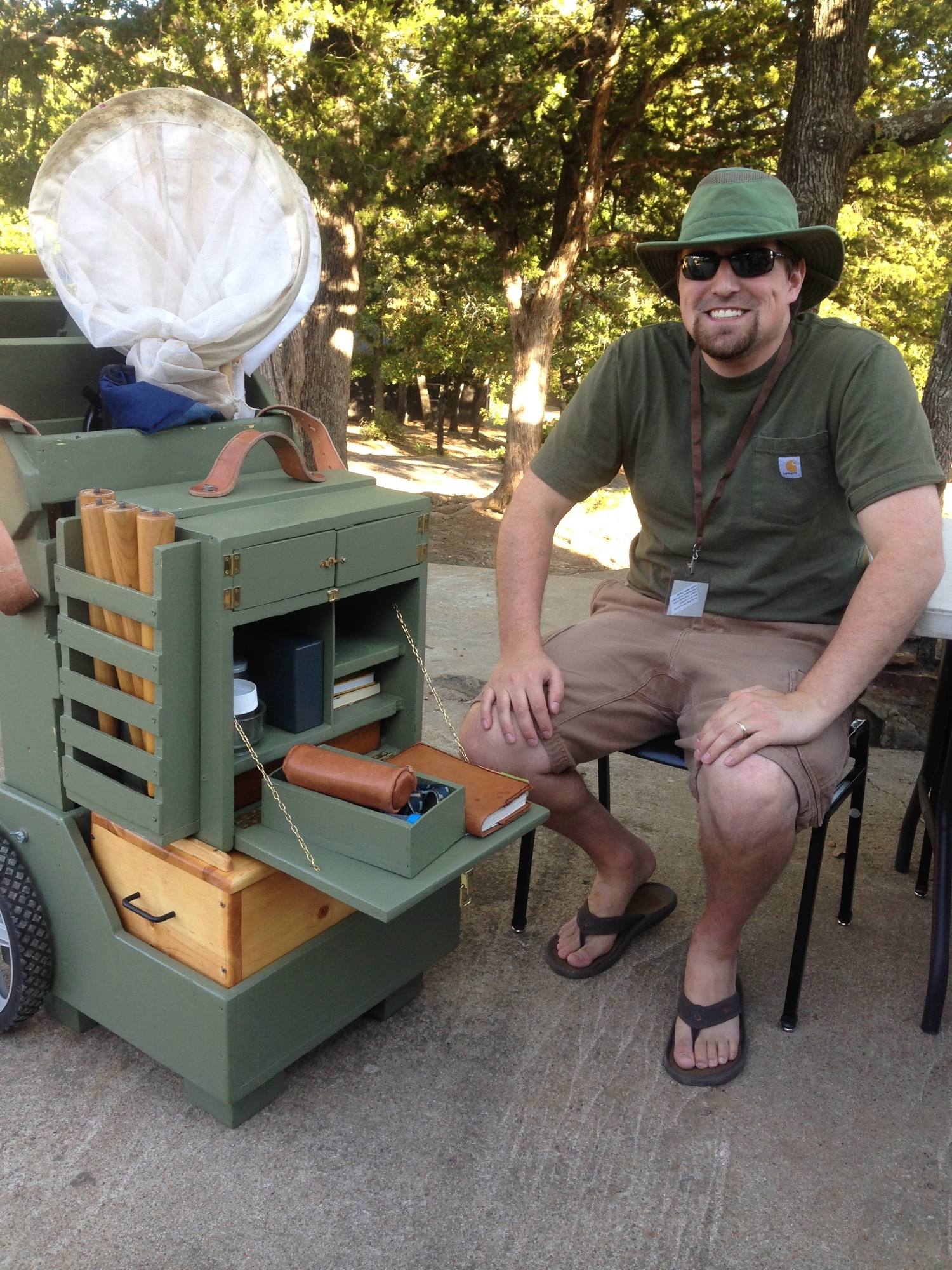
About
The Black Kettle NG is over 30,000 acres across approximately 100 tracts of land. The inventory focused on only a few of the tracks, but covered the wide variety of habitats. From shortgrass flats to bottomlands, along the Washita River, from the rough broken country of the red plains to the steep canyon sides, the diverse terrain creates a fascinating heterogeneous landscape that over 230 expert biologists and citizen scientists explored during BioBlitz! 2014. We searched shinnery oak mottes, wetlands surrounded by buttonbush, and grasses mixed with sagebrush for all biological species. The inventory also included the 315 acres of the Washita Battlefield NHS and the small acreage of Cheyenne’s Memorial Park.
Inventory Totals
795 Biological Species Observed

About
Migrating birds boosted the bird count. Bee experts, Victor Gonzales and Don Rolf, found over 20 species of bees. A rainy summer produced abundant wildflowers and grasses. Recent precipitation enhanced fungal growth and increased the number of species found. The variety of aquatic habitats led to good counts for both algae and fish. And the variety of habitats in combination with the warm afternoon helped to raise the reptile and amphibian count to 26 species.

Inventory Totals
403 Expert Biologists & Citizen Scientists
977 Biological Species Observed

About
BioBlitz! 2012 was record setting – the coldest BioBlitz! held in Oklahoma! Nonetheless, 292 expert and citizen biologists converged at Foss Reservoir to inventory the biological diversity during this chilly, windy October weekend. With lows in the 30s and grey skys, the animals were reluctant to come out of hiding. The counts of mammals, terrestrial invertebrates, and birds all suffered. And, two years of drought affect the count of plants, fungi, and lichens. Despite the cold and drought, participants found 866 species during the inventory. These tough attendees found tarantulas, osprey, prairie dogs, pin cushion cactus, red shiners, and 861 more species during our short 24 hour count.


Inventory Totals
866 Biological Species Observed

About
Record setting attendance and wonderful weather contributed to the success of this year’s BioBlitz! Oklahoma. 333 citizen scientists and expert biologists scoured the drought stricken park to find over 880 species, from microscopic diatoms to the tracks of a black bear! The extra dry summer contributed to very low numbers of plants and aquatic invertebrates. Yet, we were able to find the virile crayfish – the species depicted in our 2011 logo! The bird, mammal, and fish counts were near average and, of course, the terrestrial invertebrates nearly doubled the count.
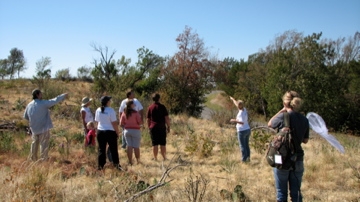
Inventory Totals
333 Expert Biologists & Citizen Scientists
880 Biological Species Observed
About
A Corps of Engineers lake located in north-central Oklahoma, Kaw Lake offers boating, fishing, picnicking, and camping. There are many coves and inlets to explore, several trails for hiking, and an abundance of clean, fresh air and sparkling water. It was a great place view nesting eagles in winter, enjoy fishing in the spring and summer, and to participate in BioBlitz! 2010 in the crisp, cool autumn air!
Tucked inbetween Osage and Kay counties, we found find a variety of habitats in the Kaw Lake Wildlife Management Areas and Army Corps of Engineer lands – tallgrass prairie remnants, Cross Timbers, wetlands, bottomland forest, and, of course, aquatic habitats that awaited inventory by the BioBlitz! team of volunteer scientists.
Inventory Totals
954 Biological Species Observed
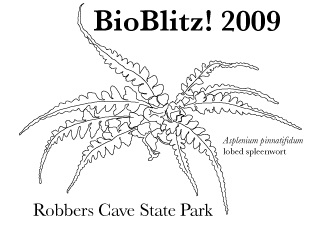
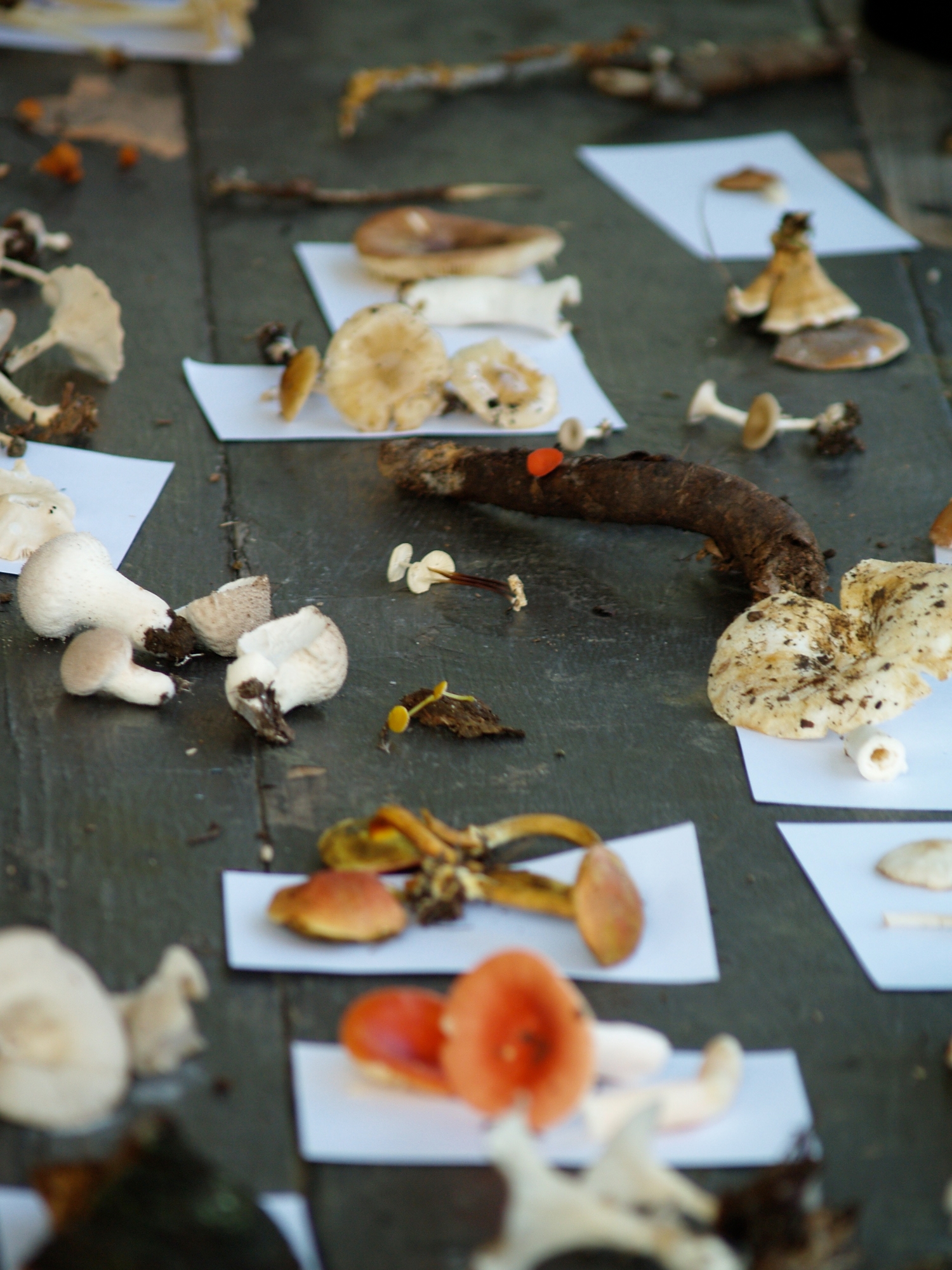
About
Nestled in the wooded hills of eastern Oklahoma, Robbers Cave was once the hideout for bandits. But in 2009, biologists of all ages and affinities scoured the hillsides, not to flush out criminals, but to find as many different organisms as possible. We had a record breaking year at Robbers Cave. Over 330 volunteers counted species over the 24 hour period. Fungi had a fantastic year due to the wet weather leading up to this year’s event. More than 150 species of fungi were found by not only the fungi experts, but also enthusiastic collectors of all abilities and affinities! We were also excited to have Gary Hevel of the Smithsonian Institution in Washington, DC join us. He participated in the first ever BioBlitz! in Rock Creek park in our nation’s capitol.
The lobed spleenwort, in the logo, is found in the deciduous forests of the eastern United States, but Robbers Cave is the only place in Oklahoma that it can be found.
Inventory Totals
866 Biological Species Observed
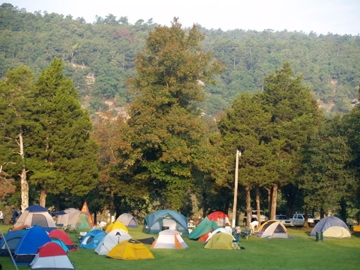
About
Well, we knew the Great Salt Plains was the place to see a diversity of birds during the fall migration and we were not disappointed. The ornithologists had a very good weekend, finding 115 species of birds during the 24-hour inventory. This was the first time in BioBlitz! history that more than 100 species of birds were counted. Non-bird biologists were not disappointed either — a total of 939 species were found within the BioBlitz! boundaries which included both the Great Salt Plains State Park and Salt Plains National Wildlife Refuge. Over 20 species were found for each the mammal, reptile and amphibian, fungi, and fish groups. Josh Cooper, a graduate student focusing on diatoms, identified 74 of those unicellular species. As usual, the big winners were the entomologists with over 350 terrestrial species and over 50 aquatic species.
Although BioBlitz had to be rescheduled due to flooding in Alfalfa County, over 100 volunteer scientists attended to join in the species tally. Students and faculty from several Oklahoma universities attended, as well as students from Norman High School, Oklahoma home schoolers, and members of several regional Audubon Societies. Many attendees took advantage of the activities led by experts throughout the weekend. The “Snakes of Oklahoma” presentation, owl calling, seining for fish, and night-time insect ecology talk were big hits and we plan to offer similar activities next year. So, mark your calendar for BioBlitz! 2009 at Robbers Cave State Park and Wildlife Management area on September 18-19.
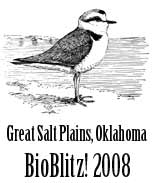
Inventory Totals
866 Biological Species Observed

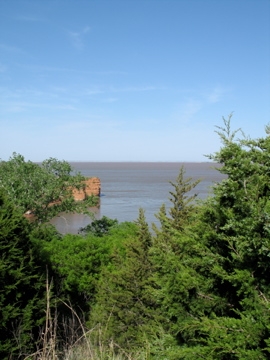
We thank the many volunteers who made our 8th BioBlitz a success. Special thanks to the staff of state park and national wildlife refuge for their efforts.
Organizations Represented
University of Oklahoma
Oklahoma Department of Wildlife Conservation
United States Fish and Wildlife Services
Oklahoma State University
University of Science and Arts of Oklahoma
University of Central Oklahoma
Oklahoma City Community College
Southwestern Oklahoma State University
Cameron University
Lake Thunderbird State Park
McLoud High School
Oklahoma Native Plants Society
Botanical Society of America
Tulsa Community College
Sutton Avian Research Center
Oklahoma Natural Areas Registry
Saint Gregory’s University
About
One of the 1,009 species recorded during the annual 24-hour biological inventory may be a new species of ant, believed to be in the genus Monomorium. David Donoso, zoology graduate student at OU, collected the ant which as been sent to experts for verification. Ken Hobson, Entomologist and Assistant Professor of Zoology at OU said, “[this] is one example of how many species new to science are waiting discovery in Oklahoma.” Dr. Hobson continued, “[a]t a time when we are beginning to acknowledge the value of the rich biodiversity we inherited in North America and when this diversity is slipping away, we have a great opportunity to document and preserve the richness that is still here.”
Over 140 biologists representing over 20 organizations and schools had such an opportunity to document the biological diversity of Wichita Mountains Wildlife Refuge on September 14 and 15, 2007. Volunteers, ranging from professional biologists to school children, climbed mountains, slogged through wetlands, turned over rocks, and peered through microscopes to document at least 1,009 species.
Local schools were invited to participate in an education program on Friday before the inventory began. Environmental educators from a variety of organizations, including the Oklahoma City Zoo, Three Forks Nature Center, and Quartz Mountain Nature Park set up outdoor learning stations through which students traveled and learned about many topics including natural history, species diversity, and edible and medicinal plants.
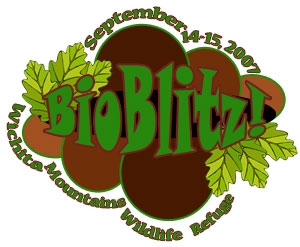

Inventory Totals
1009 Biological Species Observed

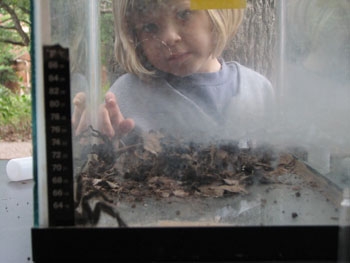
Inventory Totals
1162 Biological Species Observed



Thanks to the many volunteers who made our sixth BioBlitz a success. Special thanks to the staff of Quartz Mountain Nature Park for their efforts.
Organizations Represented
University of Oklahoma
Oklahoma Department of Wildlife Conservation
Oklahoma Tourism and Recreation Department
Oklahoma City Zoo
Quartz Mountain Nature Park
United States Fish and Wildlife Services
The Nature Conservancy
Oklahoma State University
Western Oklahoma State College, Altus
University of Science and Arts of Oklahoma
University of Central Oklahoma
Oklahoma City Community College
Southwestern Oklahoma State University
Cameron University (Project Wild)
Rose State College
Hillsdale Freewill Baptist College
Three Forks Nature Center
Lake Thunderbird State Park
Midwestern State University, Wichita Falls TX
McLoud High School
Student Conservation Association
Oklahoma Master Naturalists

About
About the Area: The Wichita and Quartz Mountains are granitic remains of a once taller mountain chain. They now appear as low mountains and outcrops that rise abruptly from the surrounding plain. These mountains run from east to west and occur primarily in Comanche, Kiowa, and Greer counties. The Wichita Mountains National Wildlife Refuge and Quartz Mountain State Park provide excellent examples of the habitats found in this area.
Large tracts of crosstimbers occur on mountain slopes, extending into the valleys. Stunted oaks and cedars also grow among the large boulder fields,and some areas are devoid of vegetation. A colorful palette of lichens covers many of the boulders. Reptiles and other animal species live on these dry, rocky slopes. Mixed grass prairie vegetation is abundant, but tallgrass prairie occurs on moist sites. Dry hilltops and overgrazed lowlands contain shortgrass communities typical of drier portions of the ecoregion. Mesquite woodlands are also present.
The rugged terrain of these mountains creates diverse habitats that can support plant communities more characteristic of eastern Oklahoma. For example, sugar maples can be found in some of the canyons in this ecoregion. Lush bottomland forest vegetation grows in the valleys and canyons. These forests are diverse and have many plant species found in eastern Oklahoma. In Oklahoma,the plateau live oak can be found only in the Wichita and Quartz Mountains. It is also common in central Texas.
A few scattered granitic caves support summer populations of bats. Because granite is resistant to weathering, these caves are usually too small to serve as maternity caves or hibernacula (hibernation sites) for bats. Other animals enter the caves for shelter.
Source: Riparian Management Handbook E-952

Inventory Totals
1094 Biological Species Observed

About
About the Area: Mohawk Park and the Oxley Nature Center support a diversity of habitats along the south bank of Bird Creek. The flood-plain forest, comprised of giant cottonwoods, sycamores, oaks, pecans, and hackberry trees and many other smaller trees and shrubs, is home to many kinds of animals and plants. Combined with open areas maintained as hay meadows or prairies and a variety of wetlands, the different habitats make especially rich combinations of conditions. In addition to bottomland forest habitats, Mohawk Park includes Lake Yahola, the Tulsa Zoo, the Mohawk Park Golf Club and expanses of highly managed, open recreational areas for picnicking.
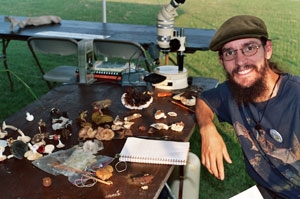
Organizations Represented
University of Oklahoma
Spring Creek Elementary Earth Club
Northeastern State University
Liberty Academy
University of Central Oklahoma
Three Forks Nature Center
Southwestern Oklahoma State University
Lake Thunderbird State Park
Oklahoma State University
Tulsa Herpetology Club
Tulsa University
Oklahoma Ornithological Society
Oral Roberts University
Tulsa Audobon Society
University of Science & Arts of Oklahoma
Oklahoma Master Naturalists
Southern Nazarene University
Oxley Nature Center
Oklahoma City Community College
Oklahoma Native Plant Society
Tulsa Zoo & Living Museum
Tulsa Community College
Oklahoma City Zoo
Hillsdale Freewill Baptist College
Oklahoma Dept. of Wildlife Conservation
University of Jaen (Spain)
U.S. Fish & Wildlife Services
McLoud High School
Oklahoma Conservation Comission
Riverfield Country Day School

About
Located in the Central Oklahoma/Texas Plains Ecoregion, this area is characterized by rolling sandstone hills having eastward facing escarpments. Dry oak forests and woodlands interspersed with prairie openings on dry uplands. Bottomlands characterized by deciduous hardwoods along rivers and streams. The Deep Fork River and bottomland runs through the area. In the forested uplands, post oak, blackjack oak and black hickory predominate, with Redbud, roughleaf dogwood and American plum common in more open areas and woodland edges.
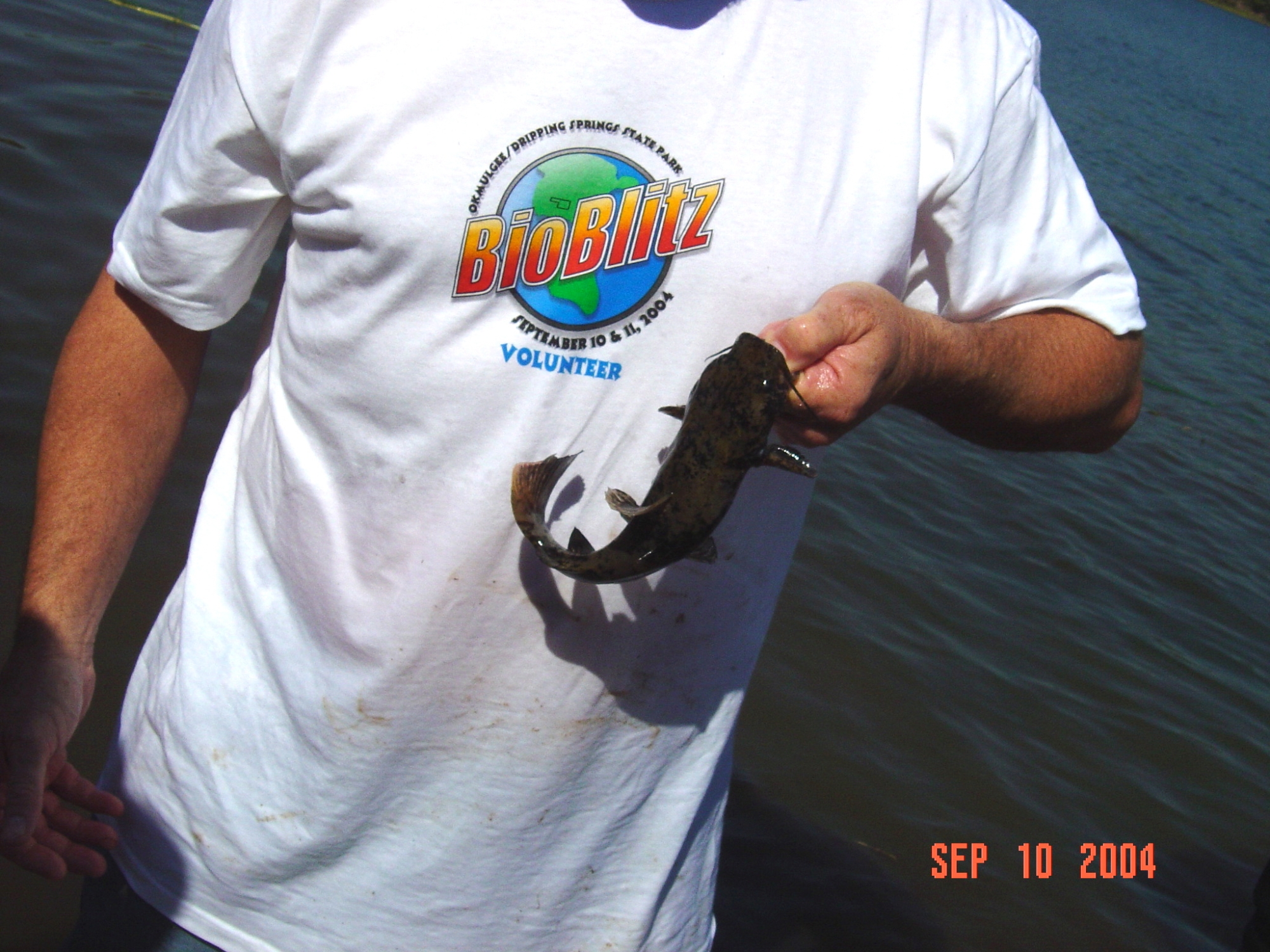
Inventory Totals
1160 Biological Species Observed
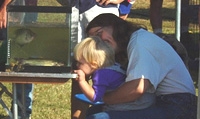
Organizations Represented
Oklahoma University Oklahoma Biological Survey
George M Sutton Avian Reseach Center
Oklahoma University Dept. of Zoology
Oklahoma University Biological Station
Oklahoma University Botanical Society
Sam Noble Oklahoma Museum of Natural History
McCloud High School
Northeastern Oklahoma State University, Broken Arrow
Northeastern Oklahoma State University, Tahlequah
Oklahoma City Community College
Oklahoma State University, Stillwater
Oral Roberts University
Southern Nazarine University, Bethany
Southwestern Oklahoma State University, Weatherford
Texas A&M University, Texarkana, TX
Tulsa Community College
University of Central Oklahoma
University of Science and Arts, Chickasha, OK
Boy Scouts of America Troop 298, Morris and Okmulgee
Oklahoma City Zoo
Oklahoma Dept. of Wildlife Conservation
Oklahoma Native Plant Society
Oklahoma Ornithological Society
Oklahoma Tourism and Recreation Dept., Oklahoma City, OK
Three Forks Nature Center
US Fish and Wildlife Service, Tulsa, OK
About
The BioBlitz! was conducted in Boiling Springs State Park and Fort Supply and Cooper Wildlife Management Areas. The Cooper Wildlife Management Area features open sand hills north to the Beaver (Cimarron) River. Across State Highway 3, the Ft. Supply Wildlife Management Area includes riparian, wetland and open water habitats associated with Ft. Supply Reservoir. These Wildlife Areas are located a few miles NW of the city of Woodward; Perennial fresh water springs may be found at Boiling Springs State Park, along with forested bottomlands and scrub oak uplands.
In northwestern Oklahoma the tallgrass prairie changes to shortgrass plains over broad uplands, while woodlands are confined to well watered slopes and ravines below the grasses. Cottonwood and willow predominate along riparian areas. Sandsage, bluestems and Indiangrass grow over stabilized dunes along the Beaver River. Springs and small wetlands form in areas where the water table is high.
Highlights: Two mammals found during the event, fulvous harvest mouse and nine-banded armadillo, were previously unreported for Woodward County.
Species interesting to biologists included spotted gar, Bell’s Vireo, Graham’s crayfish snake, tiger beetles, a bryozoan, brittle cap mushroom and pincushion cactus.
Organizations Represented
Gage Public Schools
Oklahoma Ornithological Society
University of Central Oklahoma
Oklahoma State University
Northeastern Oklahoma State University
Northwestern Oklahoma State University
Cameron University
East Central University
University of Oklahoma
Southwestern Oklahoma State University
Oklahoma City Community College
Tinker Air Force Base
Oklahoma Dept. of Environmental Quality
USDA Agric. Research Service, Woodward
U.S. Fish & Wildlife Service
University of Central Oklahoma
Oklahoma City Community College
Sequoyah State Park Nature Center
University of Science and Arts of Oklahoma
George Sutton Avian Research Ctr.
Venture Crew 393, Alabaster Caverns SP
Texas A&M University, Texarkana, TX
BSA Troop 251, Woodward, OK
Donations
Boy Scout Troop 215, Woodward
Employees of the Oklahoma Biological Survey
University of Oklahoma College of Arts & Sciences
Individuals
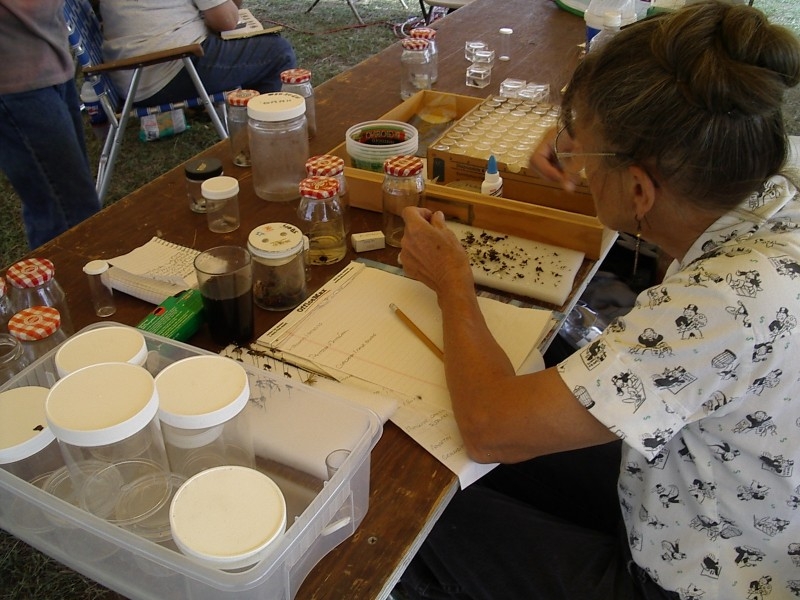
Inventory Totals
1160 Biological Species Observed


About
The BioBlitz! was conducted in the forested park and public lands along the west side of Broken Bow Lake, including Beavers Bend Resort State Park, portions of McCurtain County and Broken Bow Wildlife Management Areas. Some of the different habitats represented were: forested ridges and narrow valleys of Ouachita Highlands upland oaks and oak-shortleaf pine; bottomlands with moist deciduous forest; lake shore and creek inlets, littoral areas and wetlands; park roadsides and camping grounds, mowed lawns and recreation areas; and the Mountain Fork River below Broken Bow Lake dam.
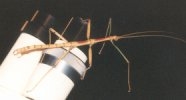
Most Fun
Placid Giant Walkingsticks (Diapheroma femorata) were plentiful in the Carson Creek Area campground. Walkingsticks eat plant material exclusively and are mainly active at night. Easily handled, they provided hours of entertainment for everyone.
Highlights
Rare or Endangered Species found:
Federally listed Red-cockaded Woodpecker (Picoides borealis). Relictual inhabitant of the McCurtain County Wilderness Area in Oklahoma. Formerly distributed throughout the southern United States, today Red-cockaded Woodpeckers are found only in scattered pockets of native pine forests.
Unusual Plants
Indian Pipe (Monotropa uniflora) is widely distributed in North America, but infrequent in Oklahoma. The plant is a saprophyte and lacks the green pigment chlorophyll. Indian Pipe indirectly receives nutrients from nearby trees through a shared relationship with fungi.

Inventory Totals
1017 Biological Species Observed
We gratefully acknowledge the generous support of individuals, businesses and public agencies in helping to bring about BioBlitz! 2002. We thank everyone who took part and who made the event such a success.
Food and Refreshments: Local Merchants, University of Oklahoma Food Services, Friends of Beavers Bend Resort Park, and Mary Miller
Tables, Chairs and BBQ Grill: U.S. Army Corps of Engineers, Hugo, OK
Motor Boat: University of Oklahoma Biological Station
Emergency Medical Services: McCurtain County EMS
Photos: Tom Bailey, Kathy Furneaux, Sheila Strawn
Organizations Represented:
Friends of Beavers Bend Resort
USDA Forest Service
U.S. Army Corps of Engineers, Hugo, OK
Natural Resources Conservation Service
University of Oklahoma
University of Arkansas
Oklahoma Herpetological Society
Oklahoma City Public Schools
University of Central Oklahoma
Oklahoma State University
Mid-America Bible College
Northeastern Oklahoma State University
Cameron University
East Central University
Southeastern Oklahoma State University
Southwesern Oklahoma State University
Oklahoma City Community College
Three Forks Nature Center
Tulsa University
Tulsa Zoo
St. Gregory’s University
George Sutton Avian Research Center
Texas A&M University, Texarkana, TX
BSA Troop 1, Indian Nations Council, Tulsa, OK
Sam Noble Oklahoma Museum of Natural History
Donations
BSA Troop 1, Indian Nations Council, Tulsa OK
Oklahoma Native Plant Society
Employees of the Oklahoma Biological Survey
University of Oklahoma College of Arts & Sciences
Individuals
About
This city park in north Norman is 160 acres. Before the 1930s, the land was gently rolling tall- and mid-grass grassland with an intermittent creek running through it. During this time, Central State Hospital managed the land as pasture for its farm operation. Some portions of the area now in the park were under cultivation, as evidenced by contours seen today that were established to impede soil erosion. During the 1930s or later, hospital staff and patients dammed the creek for a pond, built stone bridges, a roadway around the large pond and constructed several concrete picnic tables to overlook the water. Many of the trees found in the park were planted at that time. A cemetery, now unused, was located in the far northeast corner of the quarter section. While popular with many long-time Norman residents, the park probably well known because of its association with the late ornithologist, George Miksch Sutton, who frequented the area alone or with students until his death in 1982.
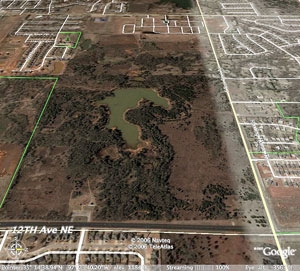
Inventory Totals
485 Biological Species Observed
Volunteers
The following organizations, schools, and agencies participated in the first Oklahoma BioBlitz!
University of Oklahoma
Oklahoma State University
University of Central Oklahoma
Oklahoma City Community College
Oklahoma Department of Wildlife Conservation
Sam Noble Oklahoma Museum of Natural History
George Miksch Sutton Avian Research Center, Bartlesville, OK
U.S. Fish and Wildlife Service, Tulsa, OK